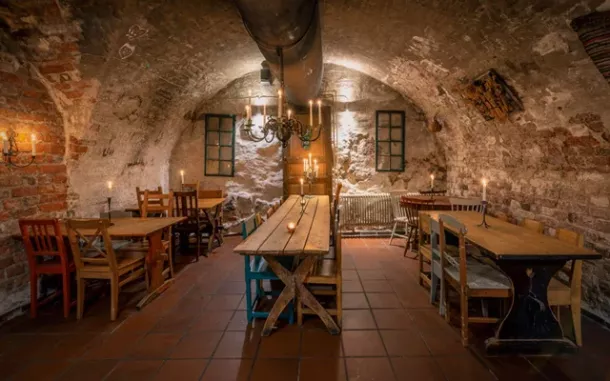About Kaffekoppen
Café Kaffekoppen is a cozy café with lovely food and cold and hot drinks in a unique building at Stortorget 20 i the heart of Gamla stan (Old town) in Stockholm, just a stone’s throw from the Royal Palace.

Stortorget 20, Gamla Stan, Stockholm
The entrance level is a sour atmosphere and the tables are tight and the fog on the window testifies to a well-attended hook. The choklad cake, the pies, the carrot cake and all the other delicacies on the menu taste homemade.
If it is crowded upstairs, you are welcome to explore the café's unique basement vault below!
Kaffekoppen is located in the Schantzska house, a red house built on top of a medieval brick cellar. The house was built in 1648 during Queen Kristina's reign, 20 years after the ship Vasa's sinking in Tegelviksbukten (Tegelvik Bay), and is named after the builder, Johan Eberbard von Schantz. During a redevelopment in the 1650s, the 92 gray stones in the façade facing Stortorget came into place. They total exactly the same number of people who were killed in Stockholm's massacre in 1520 and is said to represent all those killed.

Inside Kaffekoppen

History





There is a myth about the Schantz house which is about the gray stones that are walled in around the windows to remember the 82 people who were beheaded at the Stockholm massacre in 1520 when the Danish king Cristian II beheaded the Swedish nobility in Stortorget. Actually, there are 94 stones here.
The house was restored in 1905 when a common staircase was added and renovated in 1992. The house to the right of the Schantzska house has medieval masonry on three floors.
The Staff








Contact us
We would love to hear from you. Visit our contact page to get in touch,
or call us directly +46 (0)8 20 31 70.

